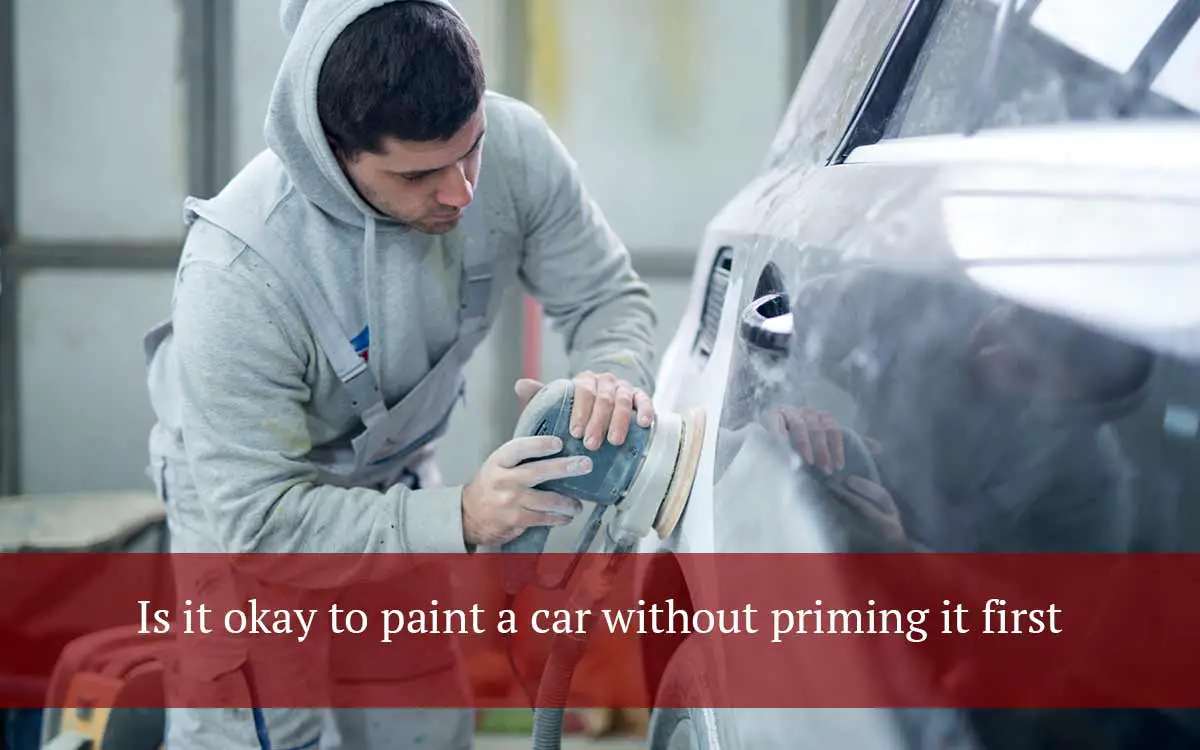When it comes to painting a car, there are a few things that you need to do for the paint job to last. One of those things is priming the car before you start painting. But what if you don’t have time to prime it? Is it still okay to paint without doing so? In this article, we will explore that question and give tips on getting the best results when painting your car without priming it first.
So, is it okay to paint your car without priming it first? The short answer to this question is NO because Priming serves several important purposes that contribute to the overall quality and longevity of the paint job, it is also an essential step in the process and one that should not be skipped. Keep reading to find out more about the importance of priming and why it should be done before you start painting.
Pros of Priming your Car Before Printing
Priming is the first step in the painting process. It serves a few important purposes, including:
• Providing a smooth surface for the paint to adhere to
• Helping the paint adhere better and last longer
• Providing a barrier between the metal and any rust or corrosion that may be present on the car
Let’s explore all of these benefits in more detail.
1. Providing a smooth surface for the paint to adhere to
Primers are formulated with special ingredients such as resins, solvents, and other ingredients that can fill any small imperfections on the car’s surface. This provides a smooth, even base for the paint to stick to, which helps ensure a beautiful finish that will last over time.
Many people might argue with the fact that it is not okay to paint a car without priming it first. I remember going to a car painter who said it was fine to paint without priming the car first. This was a big mistake! The paint job did not last long, and the results were far from satisfactory.
2. Helping the paint adhere better and last longer
Primers help ensure that the paint will stick to the surface of your car better and last longer. This is due to the special ingredients mentioned earlier that help creates an adhesive bond between the paint and the car’s surface. This is a very important step that should not be skipped! If you don’t prime your car, you may experience premature peeling or fading due to the paint not sticking properly.
3. Providing a barrier between the metal and any rust or corrosion
Primers can also help protect your car from rust and corrosion. This is because they provide an extra layer of protection between the metal of your car and any moisture or dirt that may be present in the air. This will help to prevent any rust or corrosion from occurring, which can cause major damage to the car over time.
If you are like me and like live in a place where there is plenty of rain then you should prime your car before painting it. This will help protect it from any rust or corrosion that may occur due to the wet weather.
Now that you know the importance of priming your car before painting it, let’s take a look at some tips on how to do this.
Tips for Priming Your Car Before Painting
There are a couple of things you should know about priming before you paint your car such as:
1. Make sure that the surface is clean and free from any dirt or debris
This is very important for the primer to adhere properly. Be sure to clean the surface with a degreaser before applying any primer. Dirt can cause the primer to not adhere properly, resulting in a poor finish. Degreasers contain special chemicals that help to break down any dirt or grease on the surface of your car.
2. Use a high-quality primer
Make sure you use a high-quality primer when painting your car. Primers come in different formulations, and some are better suited for certain surfaces and environments than others. Make sure you read the label carefully and do some research on the best primer for your car.
3. Allow the primer to dry completely
It is important to allow the primer to fully dry before you apply any paint. This will help ensure that the paint adheres properly and does not peel or fade over time. If you live in a place where there is a lot of moisture and humidity, then you may need to wait longer for the primer to dry.
3. Follow the manufacturer’s instructions
Whenever using any type of paint product, it is important to follow the manufacturer’s directions carefully. This will ensure that you get the best results from your painting project and that you are using the safest products available.
4. Apply several thin coats of paint
When painting your car, it is best to apply several thin coats of paint rather than one thick coat. This will help ensure that the paint is evenly distributed and more likely to last longer. Also, be sure to use even strokes when applying the paint to create a smooth finish. I remember the first time a rookie painter was tasked to paint my car, they put on one thick coat and it ended up peeling off in a few months!
5. Allow time for drying between coats
It is important to allow time for the paint to dry in between coats. This will help ensure that all of the layers are properly bonded and there is no cracking or peeling over time. Depending on the environment, you may need to wait anywhere from a few hours to overnight before applying the next coat.
6. Use a good-quality primer
It is important to use a good-quality primer that is compatible with the type of paint you are using. This will help ensure that the paint adheres better and lasts longer. Be sure to read the instructions on the can before applying the primer.
By following these tips, you can be sure that your car looks great and lasts for years to come. So don’t forget to prime your car before painting it! It may take a bit of extra time, but it is worth it in the long run.
By following these tips, you can be sure that you will get a great finish by priming your car before painting it. Priming serves many important purposes and should not be skipped if you want to achieve the best results possible.
If you are like me and don’t have time to prime your car before painting it, you may be wondering what other options are available. There are a few alternatives that can work just as well and provide the same benefits as priming.
Alternatives to Priming Your Car
If you don’t have time to prime your car before painting several other options exist. These alternatives include:
• Sanding the car’s surface with fine-grit sandpaper
• Applying a professional degreaser or rust converter
• Using an epoxy primer
1. Sanding the car’s surface with fine-grit sandpaper
Fine-grit sandpaper can be used to remove any rust, dirt, or grease from the surface of your car before painting. This will help ensure that the paint adheres better and is less likely to chip or peel off over time. This kind of sandpaper has super fine particles that effectively remove rust and dirt without damaging the car’s surface.
2. Applying a professional degreaser or rust converter
Professional degreasers and rust converters are effective alternatives to primers when painting your car. They work by chemically removing any existing rust, dirt, and grease from the surface of your car to create a clean surface for painting.
3. Using an epoxy primer
Epoxy primers are specifically designed to provide excellent adhesion and corrosion resistance when applied to metal surfaces. They can be used as an alternative to traditional primers, but they tend to be more expensive so this option may not be suitable for everyone.
Each of these alternatives will help create a smooth, even surface for the paint to adhere to and provide a barrier between the metal and any rust or corrosion. However, none of these options are as effective as priming, so it is best to use them along with priming for the best results. I wouldn’t recommend skipping the primer if you are looking for the best finish possible.
Conclusion
Priming your car is an essential step in the painting process that should not be skipped. Skipping this step could lead to a poor paint job that does not last very long, or worse, one that fails completely. There are some alternatives to traditional priming that may work just as well, but none of them will provide the same level of protection or durability. So if you want your car paint job to last for years to come, be sure to prime your car before painting it!
Thank you for reading this article and I hope it has been helpful. Good luck with your next car painting project!
Happy Painting!

